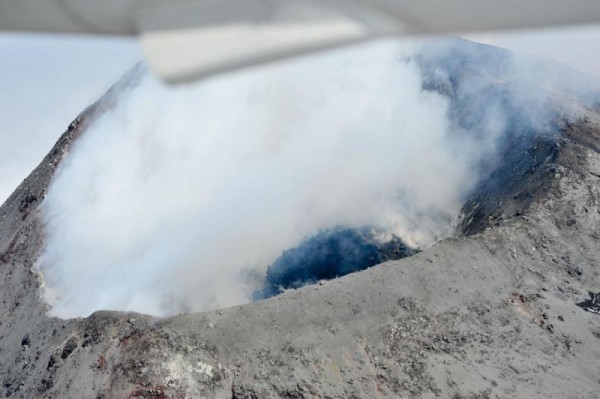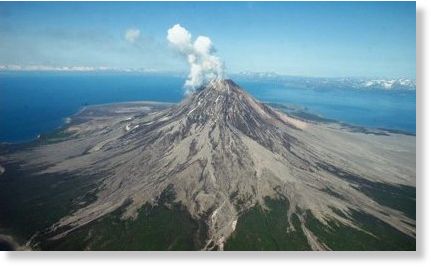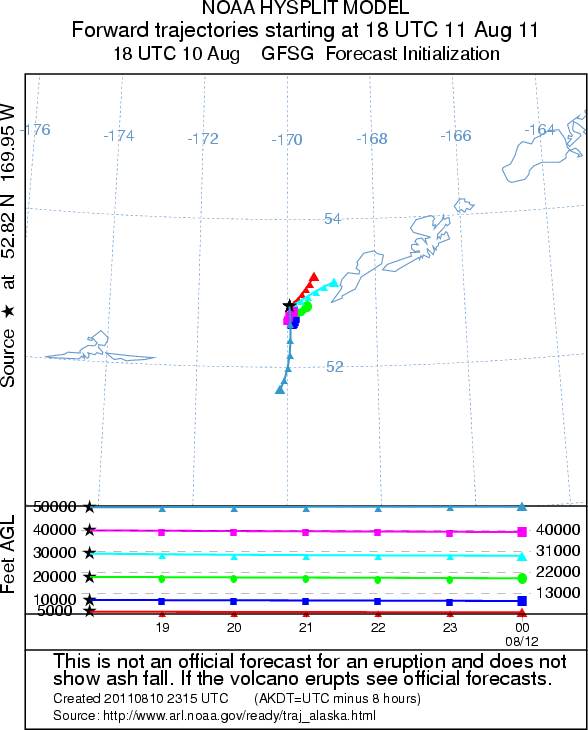Cleveland Volcano, located on uninhabited Chuginadak Island in the Aleutians, has begun building a lava dome. An Alaska volcano has begun erupting, but it is not yet posing a serious hazard to populations or aviation in the region.
The eruption was described as a "
slow effusion of magma that is forming a lava dome" by John Power, the scientist-in-charge at the
Alaska Volcano Observatory.
Along with the quiet nature of the eruption, the remote siting of the volcano has so far kept the hazard level low.

© Dave Withrow, NOAAAerial photograph of Cleveland's August 2011 lava and summit crater. This lava dome was extruded sometime after July 7 when the last clear view of the summit area did not show this feature. The formation of the lava dome is consistent with thermal anomalies observed in satellite imagery since July 19, 2011. This dome is approximately 60 m in diameter in a 200m-wide crater.
However, continuing growth of the lava dome could eventually pose a threat of ash cloud eruption, a potentially serious event of utmost interest to aviation. The dome, thus far confined to the summit crater, could generate explosions if it expanded enough to spill out.
It is apparently not possible to say how long the dome-building might last. Past experience with other dome-building eruptions shows that dome growth can last for weeks to months. Notoriously cloudy Aleutian weather can make observation of the volcano difficult. The volcano is not "wired," inasmuch as it lacks a real-time seismic network of the kind used some of the Earth's more active volcanoes.
Cleveland Volcano commonly erupts short-lived blasts with ash clouds exceeding 20,000 feet. Its last significant eruption happened in February 2001, when a lava flow reached the sea.
Cleveland WEBCAM






Reader Comments
to our Newsletter